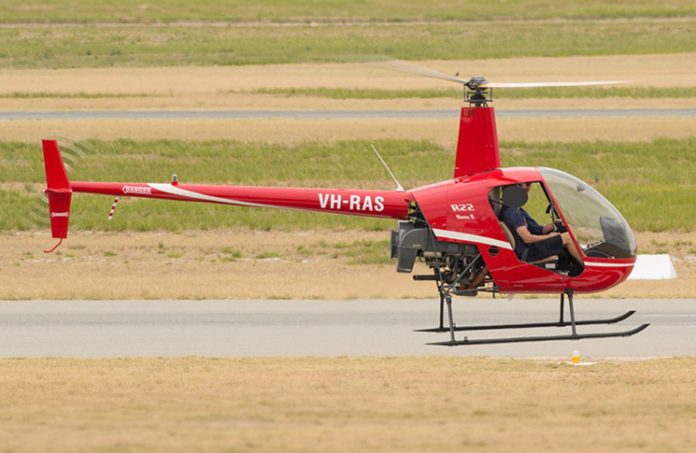A Robinson helicopter broke apart inflight in Western Australia, according to a report by the Australian Transport Safety Bureau.
The bureau says the accident highlights the potentially catastrophic effects of low-g and/or low rotor RPM/rotor stall conditions in helicopters with semi-rigid rotor heads.
The two-seat Robinson R22 Beta II was conducting a private flight from Koorda to Jandakot on 2 October 2022 and broke-up in-flight shortly after reaching cruise altitude.
Recorded flight data showed that during cruise, the helicopter’s altitude increased by about 100 feet and then rapidly descended, almost vertically. The helicopter collided with terrain, inverted, on a dry salt flat. The pilot and passenger were fatally injured.
The bureau’s examination of the accident site identified signatures consistent with the main rotor assembly having been subjected to excessive teeter and mast bumping – where the main rotor spindle impacts the mast.
‘It was likely the helicopter entered either a low-g and/or a low-rotor RPM/rotor stall condition which, along with delayed and/or inappropriate control inputs, resulted in extreme teetering of the main rotor assembly and the in-flight break-up,’ ATSB Director Transport Safety Kerri Hughes said.
The investigation team from the ATSB explored multiple scenarios to determine the reason for the extreme teetering and mast bumping, and the investigation would have been considerably aided had the helicopter been fitted with an in-cockpit video recorder.
‘Better understanding of the circumstances leading up to extreme teeter and in-flight break-up events such as in this accident will assist investigators in determining appropriate steps for ongoing safety improvement,’ Hughes said.
Robinson introduced cockpit video cameras as standard on new R66 and R44 helicopters from 2021 and 2022 respectively. Further, they are also optional for new R22 helicopters. The manufacturer offers a camera retrofit for in-service R44s and R66s and most R22s.
‘While not required by regulation, we urge owners and operators to consider the benefits of installing cockpit video cameras, which not only aid safety investigations, but can also be used for flight instruction debriefing and as a maintenance tool,’ Hughes said.
The investigation report also highlighted the helicopter’s dual flight control configuration. Robinson recommends removing dual flight controls if the passenger is not helicopter rated or under flight training instruction.
‘When carrying passengers, the helicopter manufacturer recommends removing the passenger-side controls to avoid inadvertent bumping or interference,’ Hughes said.
She stressed there was insufficient evidence to determine if the passenger made an inadvertent control input or if they were operating any of the controls during the flight.
‘Where dual controls cannot be removed, the passenger should be fully briefed to keep their hands and feet clear.’
Hughes notes the accident demonstrates the catastrophic potential of low-g and low rotor RPM/rotor stall conditions in helicopters with semi-rigid rotor heads, such as the R22.
‘A pilot’s ability to identify the developing condition and promptly apply the correct flight control inputs is vital to effective recovery and continued safe operation,’ she said.
Read a related article in Flight Safety Australia here.
Read the full report here.





